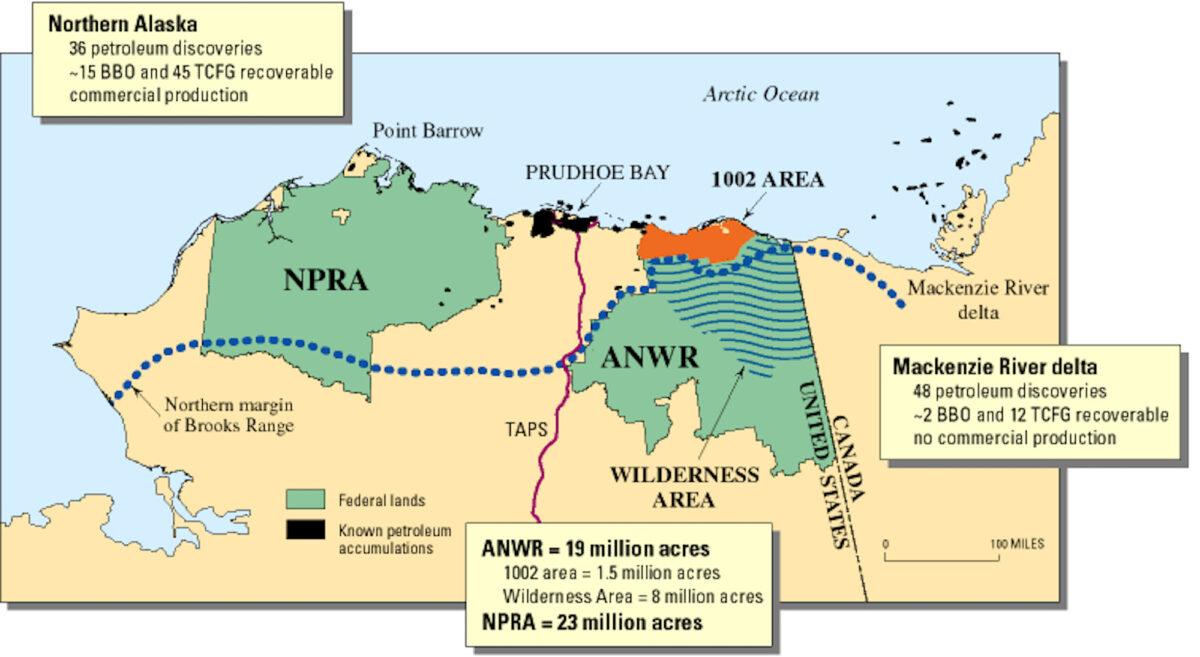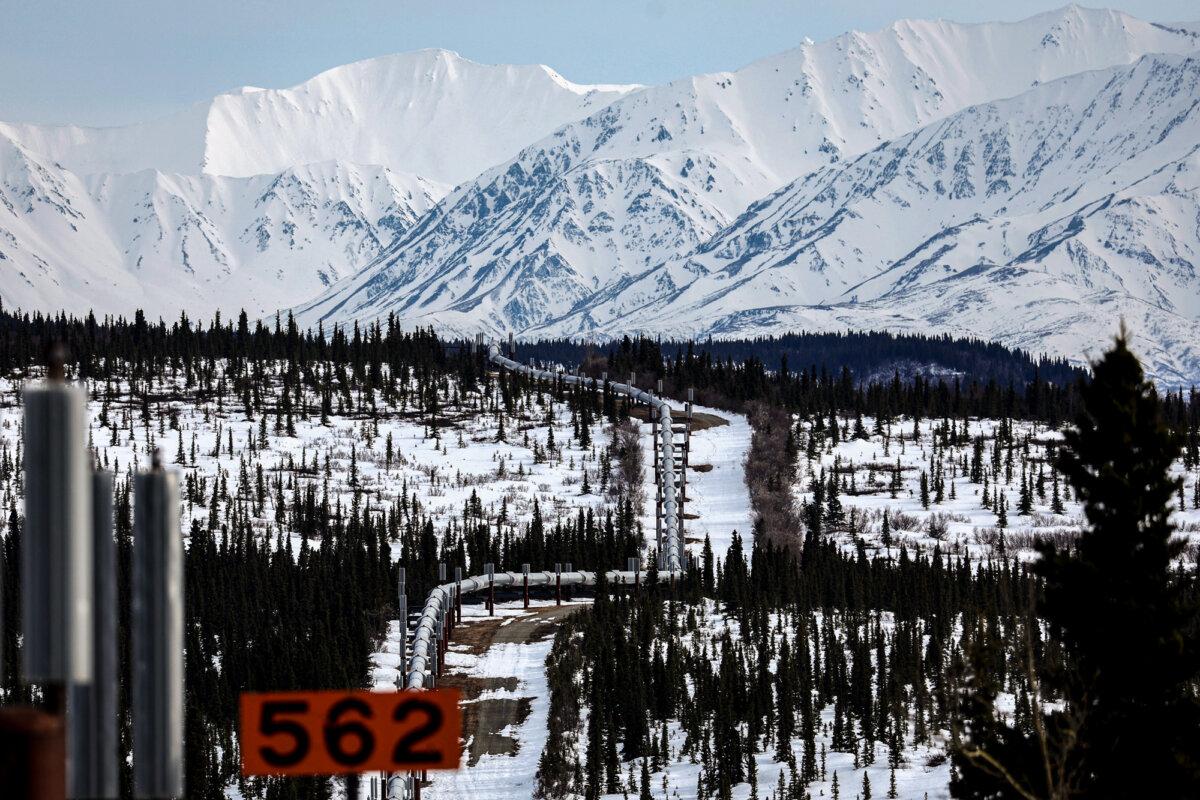Modest Increases in Oil and Gas Production Have a Major Positive Impact on the Economy: Reports
Conservative think tanks provide House GOP with strategies to facilitate fossil fuel development on public lands, while Democrats argue that taxpayers are subsidizing Big Oil.
With an average annual increase of $12,418, this would translate to a total of $300,000 for a family of four by the year 2050, according to Kevin Dayaratna, director of the Heritage Foundation’s Center for Data Analysis and co-author of the study, who spoke before a House panel on April 2.
Three experts, including Dayaratna, highlighted studies that chart the country’s resources and outline plans for their development in line with President Donald Trump’s energy initiatives and the establishment of a sovereign wealth fund.
Interior Secretary Doug Burgum has consistently remarked that the 500 million acres of public land, 700 million acres of subsurface minerals, and 2.5 billion offshore acres under his purview represent a long-mismanaged sovereign wealth fund that has yet to be thoroughly evaluated or utilized for revenue. His strategy to “unleash America’s balance sheet” aims to address the $37 trillion federal debt, commencing with necessary *mapping* to determine the resources within public land.
Firms, including one with the world’s most extensive private ocean sensor network, alongside researchers from the University of California San Diego’s Scripps Institute of Oceanography, expressed enthusiasm about entering into public-private collaborations to explore uncharted areas rich in possibly untapped resources during the March 26 hearing.
The same enthusiasm was echoed a week later, with Dayaratna, Energy Policy Research Foundation distinguished fellow Glen Sweetnam, and America First Policy Institute Director Matthew Jensen advocating for Congress to utilize their proposals to harness the wealth of fossil fuels on public lands, especially natural gas, to invigorate the economy and bolster national security.
As of late March, the Interior Department’s Bureau of Land Management oversees nearly 10,000 leases for oil and gas development across 37 million acres of federal public lands, mainly concentrated in eight western states. The bureau conducts quarterly lease sales when sufficient land and interest justify 30-day sealed-bid auctions.
The bureau anticipates at least 15 federal public land auctions in 2025, having held 14 last year and 13 in 2023. In contrast, the Biden administration paused public lands oil and gas leasing during 2021 and much of 2022 for a climate-impact assessment.
The Bureau of Ocean Energy Management within the Interior Department is reviewing the five-year offshore oil and gas lease program for 1.7 billion coastal acres after Trump rescinded Biden’s orders that limited offshore exploration.

Map of northern Alaska and nearby parts of Canada showing locations of the Arctic National Wildlife Refuge (ANWR), the 1002 area, and the National Petroleum Reserve—Alaska (NPRA). USGS
Proceed With Caution
As offshore leases and expanded drilling in the Arctic National Wildlife Refuge and the National Petroleum Reserve are set to be available in 2025, an analysis from the Energy Policy Research Foundation estimates that new area sales could generate $124.5 billion over the next decade, while also creating 200,000 temporary construction jobs and 7,500 permanent operational jobs.
Matthew Jensen from the America First Policy Institute stated that boosting onshore lease sales to reach annual “higlands of the last decade” and increasing offshore sales to three annually could yield up to $58 billion over a decade.
The optimistic forecasts from Dayaratna, Sweetnam, and Jensen regarding heightened energy production—primarily natural gas—on federal public lands, which would reduce consumer prices and stimulate export revenues, received enthusiasm from Republican members.
“This is the moment to focus on permitting significant investments in mining, oil, and gas right here in the U.S. This will not only provide excellent returns on federal revenues but also ensure a more stable and resilient energy supply chain that we rely on daily,” stated Subcommittee Chair Rep. Mike Collins (R-Ga.).
He urged for immediate collaboration with the new administration on strategies that would enhance the lives and financial situations of all Americans in the future.
However, Democrats responded with skepticism, as Rep. Maxine Dexter (D-Ore.) asserted that House Republicans were “exaggerating the economic effects of unrestricted drilling on our most treasured lands” with a deluge of “favorable” analyses from conservative groups to convince the Congressional Budget Office “that their figures hold merit.”
“If the [Congressional Budget Office] is persuaded that drilling could be lucrative for the federal government, Republicans might be able to grant even more of your taxpayer dollars to Big Oil,” she contended, dismissing job growth projections as “insubstantial.”
“In the last decade, U.S. oil and gas employment has decreased by roughly 40 percent. Meanwhile,” Dexter continued, “taxpayers are bearing the costs for Big Oil” with $15 billion in annual subsidies.
She queried Southern Environmental Law Center senior attorney Megan Gibson during the hearing about whether the production and revenue predictions in the reports mentioned were feasible.
“What has come from that auction is less than 1% of the originally estimated revenues,” she remarked, highlighting that despite the Trump administration’s opening of nearly 20 million acres of federal lands in Alaska for oil and gas extraction, market analysts are not forecasting a rush for leases immediately.

A segment of the Trans Alaska Pipeline System traverses boreal forest against the backdrop of the Alaska Range mountains near Delta Junction, Alaska, on May 5, 2023. This 800-mile-long pipeline transports oil from Prudhoe Bay on the North Slope to the port of Valdez.Mario Tama/Getty Images
Fact vs. Fiction
Dexter presented data from studies that countered claims made during the hearing, including insights from a March Energy Innovation Policy & Technology report and Climate Power’s Trump Impacts Tracker.
Dexter highlighted that the president and numerous Republicans seek to fully repeal the 2022 Inflation Reduction Act, which provides significant tax incentives for non-carbon energy initiatives until 2035.
Repeal could lead to the loss of nearly 800,000 jobs and inflate energy costs by $32 billion across the coming decade, costing average families more than $100 annually, according to Energy Innovation Policy & Technology data.
“We are already witnessing the ramifications,” Dexter noted. “Utility companies in 16 states have raised rates, some by up to $32 monthly, due to uncertainties surrounding clean energy investments.”
Studies and forecasts are subject to change, especially when estimating energy demand based on unstable commodities like oil and gas, which can be swayed by market dynamics and political factors, she stated.
However, Gibson emphasized that ideological assessments are unnecessary to identify the energy mix that is cost-effective for consumers.
In 10 of the top 12 states where “renewables have permeated the grid,” she explained, energy costs are lower for consumers.
“This is evidenced by the fact that people are spending less on their energy bills. The proof is in the data,” Gibson concluded.




